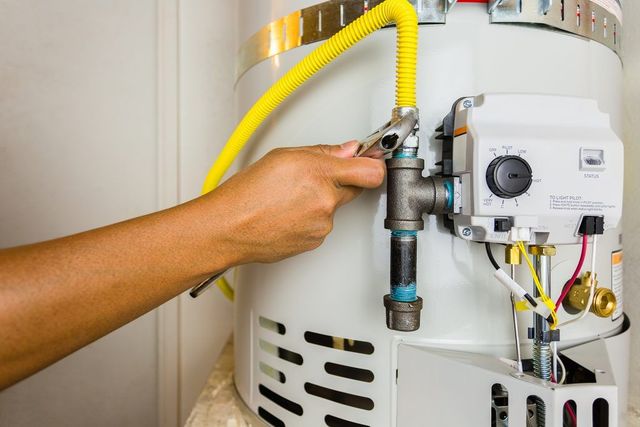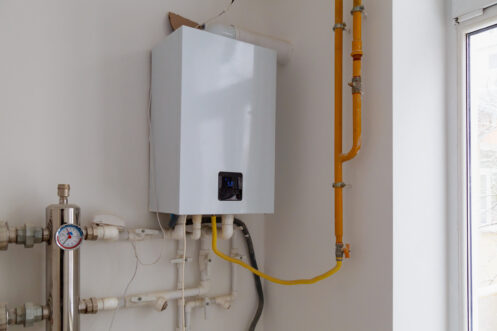Right here below you'll find more first-rate insight about How to Maintain a Hot Water Heater in a Few Simple Steps.

Hot water is necessary for daily convenience, whether it's for a refreshing shower or washing recipes. To ensure your warm water system runs efficiently and lasts much longer, normal upkeep is essential. This write-up offers functional tips and understandings on just how to maintain your home's warm water system to stay clear of interruptions and pricey repairs.
Introduction
Keeping your home's hot water system might seem daunting, but with a couple of straightforward steps, you can ensure it runs smoothly for several years to come. This guide covers whatever from recognizing your warm water system to DIY maintenance tips and understanding when to employ specialist help.
Significance of Preserving Your Warm Water System
Normal maintenance not just expands the lifespan of your hot water system but likewise ensures it runs efficiently. Overlooking maintenance can cause lowered performance, greater power bills, and even premature failing of the system.
Signs Your Hot Water System Requirements Maintenance
Understanding when your hot water system needs interest can stop significant concerns. Keep an eye out for indicators such as irregular water temperature, odd sounds from the heating unit, or rustic water.
Purging the Water Heater
Flushing your hot water heater gets rid of debris build-up, enhancing effectiveness and extending its life.
Checking and Replacing Anode Rods
Anode rods avoid rust inside the tank. Examining and replacing them when broken is important.
Facility Concerns Calling For Specialist Assistance
Examples include major leakages, electrical problems, or if your hot water heater is continually underperforming.
Regular Expert Maintenance Benefits
Specialist maintenance can include thorough inspections, tune-ups, and ensuring conformity with security requirements.
Examining and Changing Temperature Setups
Changing the temperature setups makes sure ideal performance and safety.
Do It Yourself Tips for Maintenance
You can perform numerous maintenance tasks on your own to keep your hot water system in leading condition.
Checking for Leakages
Frequently inspect pipelines and connections for leaks, as these can cause water damage and greater bills.
Recognizing Your Hot Water System
Prior to diving into maintenance jobs, it's valuable to understand the standard components of your warm water system. Generally, this consists of the hot water heater itself, pipes, anode poles, and temperature controls.
Regular Monthly Upkeep Tasks
Routine month-to-month checks can assist catch small issues before they rise.
Evaluating Stress Alleviation Valves
Testing the stress relief valve guarantees it functions properly and prevents extreme stress buildup.
Shielding Pipes
Shielding hot water pipes lowers heat loss and can conserve power.
When to Call a Professional
While do it yourself maintenance is helpful, some concerns require expert expertise.
Final thought
Normal maintenance of your home's warm water system is essential for effectiveness, long life, and price savings. By complying with these ideas and understanding when to look for specialist aid, you can guarantee a trustworthy supply of warm water without unexpected disruptions.
How to Maintain an Instant Hot Water Heater
Before tinkering with your hot water heater, make sure that it’s not powered on. You also have to turn off the main circuit breaker and shut off the main gas line to prevent accidents. Also turn off the water valves connected to your unit to prevent water from flowing into and out of the appliance. 2. When you’re done, you have to detach the purge valves’ caps. These look like the letter “T†and are situated on either side of the water valves. Doing so will release any pressure that has accumulated inside the valves while at the same time avoid hot water from shooting out and burning your skin. 3. When the purge valves’ caps are removed, you have to connect your hosing lines to the valves. Your unit should have come with three hoses but if it didn’t, you can purchase these things from any hardware or home repair shops. You can also get them from retail stores that sell water heating systems. Read the user’s manual and follow it to complete this task properly. When the hosing lines are connected, open the purge port’s valves. 4. You should never use harsh chemical cleaners or solutions when cleaning your unit. Make use of white vinegar instead. It should be undiluted and you’ll probably use about 2 gallons. 5. Now flush your water heater. This task should probably take about 40 minutes. We can’t give you specific directions for this because the procedure is carried out depending on the type, model and brand of your heater. With that being said, refer to the user’s manual. 6. When you’re done draining the unit, you have to turn off the purge port valves again. Remove the hosing lines that you earlier installed on each of the water valves. Put the valve caps (purge port) back in their respective places and be very careful so as not to damage the rubber discs that are found inside these caps. 7. Now that everything’s back in place, check your user’s manual again to find out how to reactivate your water heating system. 8. Once it is working, turn one of your hot water faucets on just to let air pass through the heater’s water supply pipes. Leave the tap on until water flows smoothly out of it. https://www.orrplumbing.com/blog/2014/september/how-to-maintain-an-instant-hot-water-heater/

I hope you liked our piece about What Kind of Maintenance Do Water Heaters Need?. Thanks for taking the time to read our blog post. Liked our posting? Please quickly share it. Help others check it out. Bless you for being here. Come back soon.
Booking